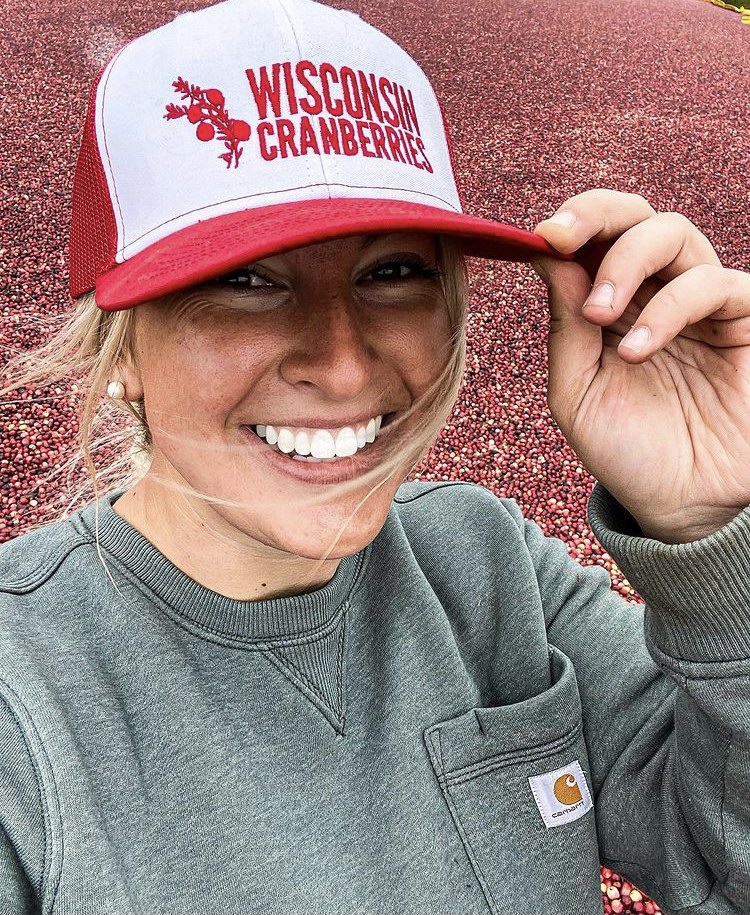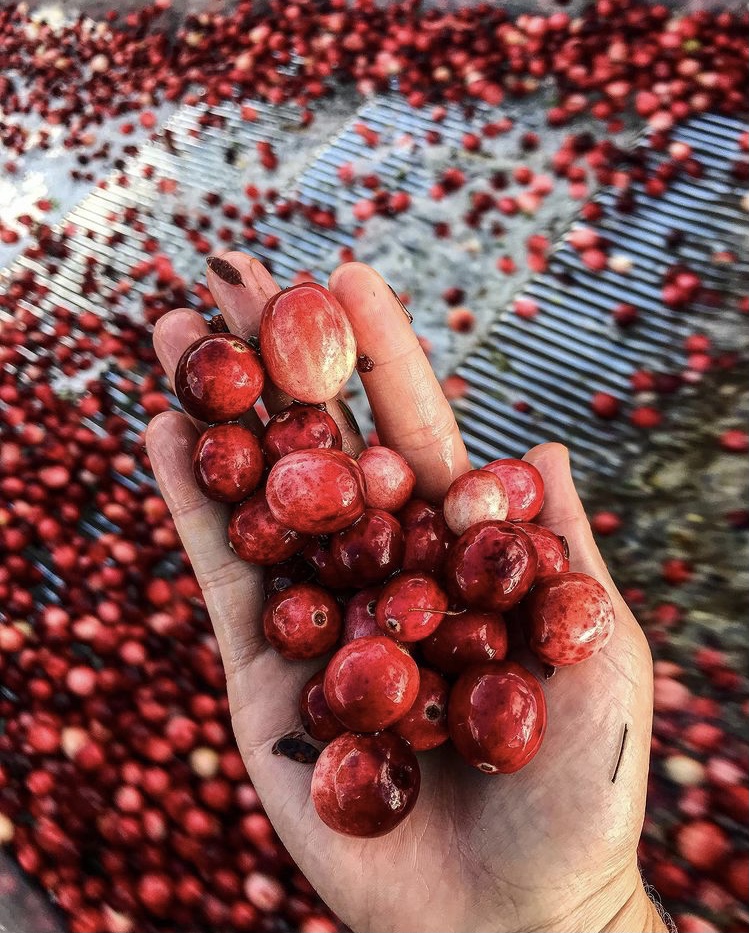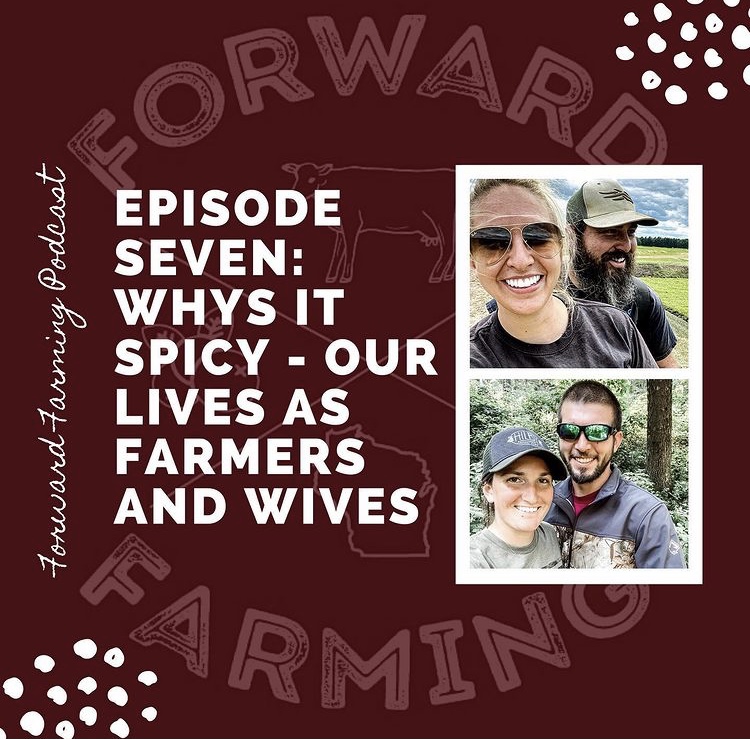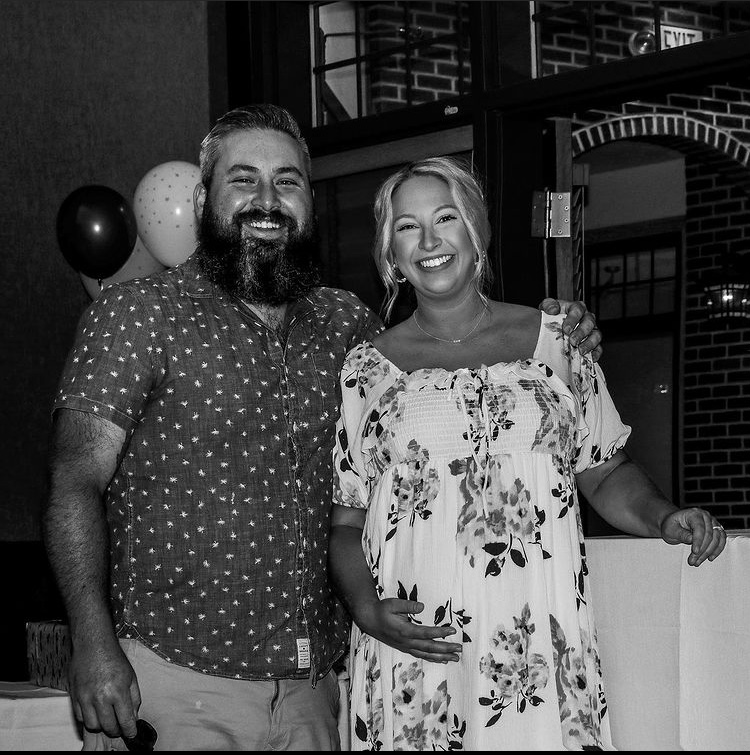Describing herself as a ‘cranberry cowboy,’ Amber Bristow knows her story in production agriculture is unique. After snagging a degree in Sports Management (‘because that’s what all the farm kids do, right?’ she asks) and taking on a brief stint in an office job, she felt the pull to return to her family’s farm in West Central Wisconsin, making her the fifth generation to live and work the land.
And while working the 230 acres of cranberries is a job by itself, Amber quickly realized she could take her day-to-day work and share it with the world… enter #CrAMBERryChats. Her social media following surged and suddenly she found herself educating and advocating on behalf of cranberry producers and female farmers.
Magnetic was lucky to snag a quick Q&A session with Amber this month:

What’s one interesting fact that non-cranberry producers should know about cranberry farming?
A big misconception in our industry is that cranberries are grown in water since that’s all that is ever really shown in the media. But in reality, our cranberries are grown in sandy, acidic soil, and grow on low-running vines. They are a perennial plant and are only in water (like what you see in the Ocean Spray commercials) during harvest. The rest of the year is pretty dry! I can walk out in the vines without getting my boots wet.
What’s a typical day look like for a cranberry farmer during this time of year (mid-July)?
Mid-July is our growing season! We are watching the cranberry blossoms drop and the tiny berries emerge and grow. It is important we keep a close eye on vine health to make sure they are getting enough nutrients to keep up with the growing fruit. We are also irrigating nearly every day to make sure the berries are hydrated. It’s important the vines are well taken care of because they are already developing next year’s buds.

What’s it like to work within a large cooperative grower-owned group like OceanSpray?
We love working with Ocean Spray! They are really great about keeping the growers in the loop on the business side of things as well as providing scientists and researchers to help us solve any problems we might be having at the marsh. They really take our feedback into consideration and are always open to suggestions when it comes to running the Co-op.
Let’s go back to the beginning of your #CrAMBERryChats adventure. Why did you decide to start advocating and educating on social media? Similarly, what drove you to start your podcast Forward Farming?
I came up with #CrAMBERryChats while I was mowing the lawn one day (My best thoughts come from the lawnmower!). I was replaying a conversation I had with someone local who asked, “what’s it like working in the water all day?” and realized that there wasn’t much information out there about what cranberries look like the majority of the year.
I thought, ‘I have a phone and I have social media,’ why don’t I start sharing my life on the marsh and try to reach some people that might be interested in cranberries? I created my page in January 2020 and just started posting my day-to-day life on the marsh. some of the projects we were working on, and just the overall growing process. I found a great group of female farmers that shared my page, and it just took off! It’s a very humbling feeling when I receive a message or comment saying “WOW! I had no idea that much work went into my cranberry sauce!”
I actually wanted to start a podcast before I started my social media page. I had everything planned out in my head but got cold feet when it came time to act upon it. It wasn’t until I started following Becca (Becca Hilby of @farmingwiththehilbys) on social media that I got the courage to start thinking about it again and I pitched the idea of Forward Farming to her and she agreed to be my co-host even though we had never met in person or had a real conversation before!

If you could only share one Forward Farming podcast episode with someone to get them hooked, which one would it be and why?
One of my favorite episodes has to be “WhYs It SpIcY- Our lives as Farmers and Wives”. Even though we are a farm-based podcast, we try to incorporate all sides of farming into every episode – the good, the bad, the ugly. Just to remind our listeners there is WAY more to life than what is shown on social media. Becca and I felt there was not enough representation from the female farmers out there and we talk about our struggles of being a woman in a “male-dominated” industry and how we balance the busy life as a farmer with our home lives. We often say that this podcast is a form of therapy for us where we can both vent and laugh.
You’re about to be a mom (congrats!). Assuming #Cranbabe becomes the 6th generation to work on the farm, what do you see as the biggest change coming to the industry that he or she will encounter?
Thank you! Lil Cranbabe is due at the end of August and we are so excited to raise the 6th generation out here – just in time for harvest! I think the biggest change coming to our industry is the technology. There has been so much change since I was a kid, I can’t imagine what things will be like in 20 years (hopefully easier!).
But I also think climate change could have a huge impact on the industry. Our plants depend on a cold winter during their dormancy period to remain dormant, and a cool spring to come out of the dormancy. With the shorter/more extreme winters mixed with the earlier/warmer springs, and it seems like summer storms are getting more intense/frequent, it is throwing us for a loop on how we can be better prepared for the next year, even though the next year is never the same as the previous.

Free time & farming aren’t two things that normally mix. In the little spare time that you have, what do you and your family like to do for fun?
I love to bow hunt! I don’t get a ton of free time in the fall, but I try to take full advantage of every free weekend or evening by sitting in the tree stand. It’s my favorite way to relax and just enjoy nature in a different way.
Nominate an interesting person in agriculture to be featured in our Movers & Shakers series.

